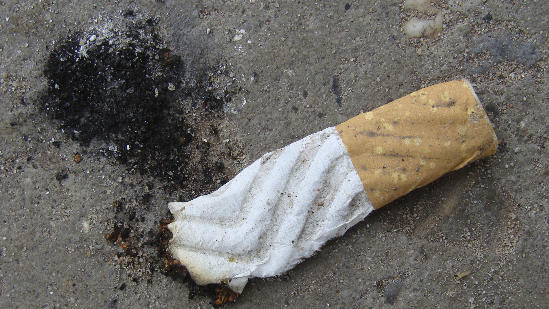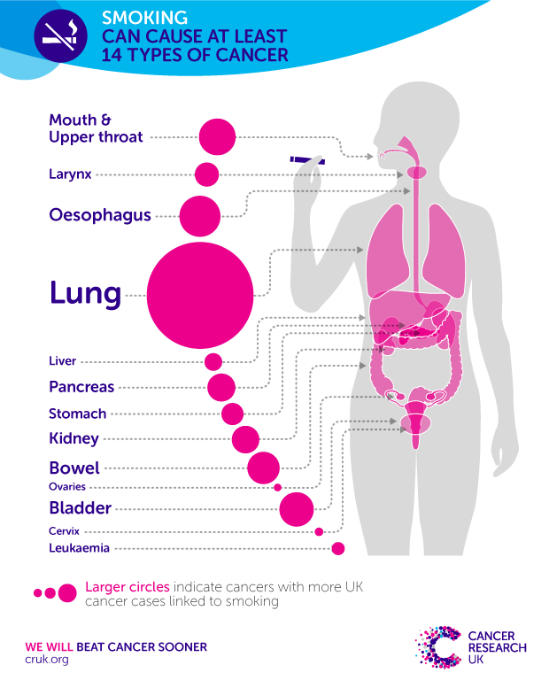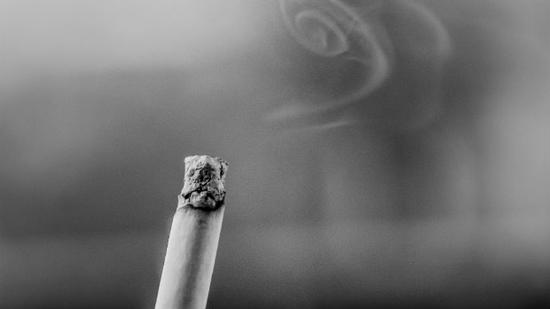بسم الله الرحمن الرحيم
Teenage Years: Most Difficult for the Parents
“Stop trying to control my life!”
“I hate you!”
Teenage Years: Most Difficult for the Parents

Smoking is by far the biggest preventable cause of cancer. Thanks to years of research, the links between smoking and cancer are now very clear. Smoking accounts for more than 1 in 4 UK cancer deaths, and nearly a fifth of all cancer cases.
The good news is that many of these deaths are preventable, by giving up smoking. Speak to your GP or pharmacist, or visit the NHS Smokefree(link is external) pages for free advice and support to give you the best possible chance of quitting.
Chemicals in cigarette smoke enter our blood stream and can then affect the entire body. This is why smoking causes so many diseases, including at least 14 types of cancer, heart disease and various lung diseases.

Smoking causes more than 4 in 5 cases of lung cancer. Lung cancer has one of the lowest survival rates of all cancers, and is the most common cause of cancer death in the UK.
Smoking also increases the risk of at least 13 other cancers including cancers of the mouth, pharynx (upper throat), nose and sinuses, larynx (voice box), oesophagus (gullet or food pipe), liver, pancreas, stomach, kidney, bowel, ovary, bladder, cervix, and some types of leukaemia Smoking could increase the risk of breast cancer, but any increase in risk is likely to be small.
More information about different cancer types.
What influences the risk of cancer from smoking?
Smokers have a much higher risk of lung cancer than non-smokers, whatever type of cigarette they smoke. There’s no such thing as a safe way to use tobacco.
Filters and low-tar cigarettes make little difference – your lung cancer risk is not lower compared to smokers of average cigarettes. This may be because smokers tend to change the way they smoke in order to satisfy their nicotine craving, for example by taking bigger puffs or smoking more cigarettes.
The more cigarettes you smoke a day, the higher your risk of cancer. If you aren’t able to quit completely, cutting down the number of cigarettes you smoke a day can be a good first step. Even light or social smoking can harm your health so keep trying to stop entirely.
Scientists have found that the number of years you spend smoking affects your cancer risk even more strongly than the number of cigarettes you smoke a day. For example, smoking one pack a day for 40 years is even more dangerous than smoking two packs a day for 20 years.
The serious damaging effects of smoking cannot be cancelled out by leading an otherwise healthy lifestyle, like keeping fit and eating healthily. The best way to reduce your risk is to give up smoking completely(link is external).
The main way that smoking causes cancer is by damaging our DNA, including key genes that protect us against cancer. Many of the chemicals found in cigarettes have been shown to cause DNA damage, including benzene, polonium-210, benzo(a)pyrene and nitrosamines.
This is already bad news, but it’s made worse by other chemicals in cigarettes. For example chromium makes poisons like benzo(a)pyrene stick more strongly to DNA, increasing the chances of serious damage. And chemicals like arsenic and nickel interfere with pathways for repairing damaged DNA. This makes it even more likely that damaged cells will eventually turn cancerous.
Smokers are also less able to handle toxic chemicals than those with healthy lungs and blood. Chemicals in cigarette smoke make it harder for smokers to neutralise or remove toxins, and can make their immune systems less effective too.
It usually takes many years, or decades, for the DNA damage from smoking to cause cancer. Our bodies are designed to deal with a bit of damage but it’s hard for the body to cope with the number of harmful chemicals in tobacco smoke. Each cigarette can damage DNA in many lung cells, but it is the build up of damage in the same cell that can lead to cancer. However research has shown that for every 15 cigarettes smoked there is a DNA change which could cause a cell to become cancerous. This is why it’s better to give up smoking sooner rather than later.
http://www.cancerresearchuk.org/about-cancer/causes-of-cancer/smoking-and-cancer/how-to-stop-smoking
Breathing in other people’s smoke, also called second-hand smoke, can cause cancer. Passive smoking can increase a non-smoker’s risk of getting lung cancer by a quarter, and may also increase the risk of cancers of the larynx (voice box) and pharynx (upper throat).
Second-hand smoke can cause other health problems too. Every year, second-hand smoke kills thousands of people in the UK from lung cancer, heart disease, stroke and the lung disease Chronic Obstructive Pulmonary Disease (COPD).
Second-hand smoke is particularly dangerous for children. Children exposed to passive smoke are at higher risk of respiratory infections, asthma, bacterial meningitis and cot death. Second-hand smoke has been linked to around 165,000 new cases of disease among children in the UK each year.
For children, the majority of exposure to second-hand smoke happens in the home. Smoke can spread throughout the home, even if you open the windows. Almost 85 percent of tobacco smoke is invisible and smoke particles might also build up on surfaces and clothes, although the impact of this is not yet clear. If you are a smoker, smoking outside can help reduce your child’s exposure.
Second-hand smoke can reach very high levels inside cars because it is a small enclosed space.
During your journey, children in the backseat will be exposed to average smoke levels around three times the European recommended air pollution limit. But the level varies depending on how much you smoke, if you have all the windows fully open or air con on. Peak levels can reach as much as 35 times this limit.
Since 1 October 2015 it has been an offence to smoke in a vehicle carrying anyone under the age of 18 in England(link is external) and in Wales(link is external).
There are 2 types of tobacco smoke:
Second-hand smoke is made up of sidestream smoke and exhaled mainstream smoke, mixed with the surrounding air.
Sidestream smoke is about 4 times more toxic than mainstream smoke, although people inhale it in a more diluted form. This is because sidestream smoke contains much higher levels of many of the poisons and cancer-causing chemicals in cigarettes, including:

You may think a cigarette is just tobacco wrapped in paper, but it’s much more than that. When a cigarette burns it releases a dangerous cocktail of over 5,000 different chemicals. Many of these chemicals are poisonous and more than 70 may cause cancer, according to the International Agency for Research on Cancer (IARC). And it’s not just the smoker who is exposed to these chemicals, because there are also high levels in the smoke coming off the tip of a cigarette while it burns. So anyone around the smoker breathes them in as well.
This page has information on some of the poisons in cigarette smoke that we know are linked to cancer. To learn more about the impact of these chemicals in the body, see our How smoking causes cancer page.
Chemicals can get into cigarettes in different ways. Some are found naturally in the tobacco plant, some are absorbed by the plant from the soil, air or fertilisers, and some are formed when tobacco leaves are processed or are added by the tobacco industry. Others form when a cigarette burns, so are only present in the smoke coming off a cigarette.

Many of the cancer-causing chemicals in tobacco and cigarette smoke have other suprising uses too:
And then there are tobacco-specific nitrosamines – a group of cancer-causing chemicals only found in tobacco.
This cocktail of chemicals is why there is no safe way to use tobacco and the best thing a smoker can do for their health is to stop smoking completely.
The free Stop Smoking Services help thousands of people quit every year, so if you are looking for the best possible chance of success, talk to your doctor or pharmacist or visit NHS Smokefree(link is external).

Tobacco can be used in many different forms – but all are linked to cancer. There is no safe way to use tobacco.
Tobacco can be used in many different forms – but all are linked to cancer. There is no safe way to use tobacco.
Smokeless tobacco includes a wide variety of products which can be used in different ways, chewed (‘dry chewing tobacco’), sucked (‘moist oral tobacco’) or inhaled (‘nasal snuff’). Scientists have shown that many forms of smokeless tobacco increase your risk of mouth, oesophageal (food pipe) and pancreatic cancers.
Most smokeless tobacco products in the UK are used by South Asian communities. In these communities, dry chewing tobacco is often used as part of a ‘betel quid’ or ‘paan’. These consist of a mixture of betel nut (or areca nut), slaked lime and various herbs and spices, wrapped in a betel leaf.
Betel nut itself can cause cancer, so chewing betel quids can cause mouth cancer even if no tobacco is added.
Most types of smokeless tobacco contains at least 28 different chemicals that can cause cancer. Smokeless tobacco users can be exposed to similar, if not higher, levels of cancer-causing tobacco-specific nitrosamines (TSNAs) and nicotine than cigarette smokers. So, like cigarettes, smokeless tobacco is both dangerous and highly addictive.
Many people think shisha is harmless but this is not the case – shisha contains tobacco. Shisha, also called hookah or waterpipe, smokers inhale flavoured tobacco through a long pipe attached to a water bowl. Shisha smokers still inhale toxic cancer-causing chemicals and addictive nicotine.

Unlike cigarettes, shisha is burnt using charcoal so users can also be exposed to dangerously high levels of the poisonous gas carbon monoxide. Levels of carbon monoxide in the body from smoking shisha can be up to 17 times higher than from cigarettes and can cause carbon monoxide poisoning.
Looking at all the evidence together suggests that smoking shisha could at least double your risk of lung cancer and may be linked to some other cancer types.
Snus is a special type of smokeless tobacco that is used in Sweden. It is banned in most other countries in the EU. Snus is manufactured using a special process that considerably lowers the levels of TSNAs in the finished product. Because of this, snus may be less dangerous than other types of tobacco.
But it still contains these cancer-causing chemicals at a low level. Snus use has been linked to pancreatic cancer, but not mouth or lung cancer.
It is possible that snus could be used specifically to help hardcore smokers, who are unlikely to quit through other means, to stop smoking altogether. But so far the evidence is uncertain and the International Agency for Research on Cancer has concluded that smokeless tobacco should not be recommended for quitting smoking.
http://www.cancerresearchuk.org/about-cancer/causes-of-cancer/smoking-and-cancer/smoking-facts-and-evidence


Listen brothers, listen sisters, listen carefully to a story of sorrow and pain,
This is the story of the fall of Andalus, known as Muslim Spain.
Long, long ago a man called Tariq RH, with the order of Musa Bin Nusayr RH,
Conquered the beautiful land and all of its terrain.
Allah SWT gave them glory because of their pure hearts and what they did contain,
They travelled from North Africa up to the Mediterranean.
Fiercely they fought, unafraid, strong soldiers, waging warriors, like lions – the whole country did they gain,
The glad tidings had already been received from the Messenger of Allah SAW and his companions RA.
The young boy, Tariq RH was made to be the captain,
A fleet of ships arrived with men who didn’t look back as they planned to remain.
Powerful and courageous, bold and brave,
The enemies were confused – are these people from Earth or descended from Heaven?
Tariq RH was spiritual, a holy boy, who sincerely worshipped Allah and from all evil did he abstain,
Recognised by a mole on his face, he stood like a commander, devout and honest, free from name and fame.
In the books of history, he is recorded and illuminated will be his name,
He understood the purpose of life and that life is not a game.
At this time Islam was flourishing like the speed of a train,
City after city, town after town, one after the other like a long chain.
Let us not forget, this was the country that contained a Masjid – largest in the world, ‘Masjid Qurtuba’, larger than Haramayn (at that time),
They had palaces and castles, trees and gardens, overlooked by mountains.
Fruit was plentiful, vegetation was abundant, fields green and plain,
Allah’s SWT mercy descended generously by blessing them with rain.
But the tides became heavy and waves were uncertain,
When people forgot Allah SWT, Lord of the heavens, Rabbul Mashriqayn Wa Rabbul Maghribayn.
The rulers became unjust and acted like villains,
Many spent the night drinking wine and champagne.
Women were used to dance, used for lust and only to entertain,
The Masajid were empty and the pulpits (mimbar) began to cry and complain.
Evil was widespread, corruption was rife, the difference between right and wrong they could not ascertain,
All of a sudden, Allah’s SWT help disappeared as though it was uplifted by a crane.
The rulers were busy marrying maidens; hair of blonde; eyes of blue; that looked like Hoor Ayn,
For centuries the land was ruled by the pious, but now they also did not remain.
Their scholars were knowledgeable and they had rulers which were of piety, with Iman as high as a plane,
But they didn’t educate their sons & their daughters to relay the Deen, nor were they trained.

The minarets cry now for someone to call Allah’s SWT glorious name,
The rows for Salah are seen bare and very plain.
No sign of an Imam or even a chaplain,
Muslims were too busy fighting each other, their own brother had they slain.
They thought blood was cheap like a bargain,
Eventually the Muslims were expelled, or given a choice to be Christian.
Many were tortured, their actions were barbaric and inhumane,
Dear friends, think carefully upon the lessons from Muslim Spain.
Ponder with your intellect and think deeply with your brain,
Let the message sink in, let it ingrain.
For what lasted 800 years, we could not maintain,
Will the Ummah rise to the challenge ever again?


Ismail Ibn Nazir Satia (One who is in dire need of Allah’s forgiveness, mercy and pleasure).
[Written 1st Shaban 1436, after returning from the asSuffa Andalus tour]